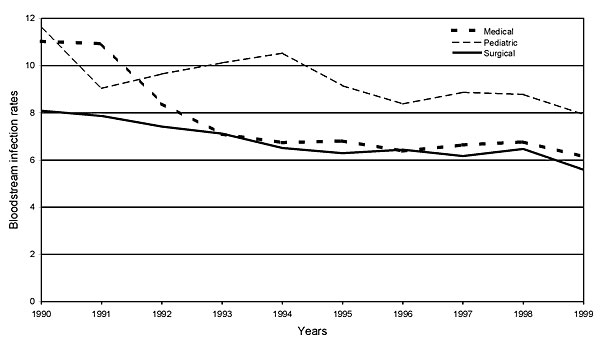Volume 7, Number 2—April 2001
THEME ISSUE
4th Decennial International Conference on Nosocomial and Healthcare-Associated Infections
State of the Art
Feeding Back Surveillance Data To Prevent Hospital-Acquired Infections
Figure

Figure. Trends in bloodstream infection rates by type of intensive care unit, National Nosocomial Infections Surveillance system, 1990-1999. Bloodstream infection rate is number of central line-associated primary bloodstream infections per 1,000 central line-days.
Page created: May 10, 2011
Page updated: May 10, 2011
Page reviewed: May 10, 2011
The conclusions, findings, and opinions expressed by authors contributing to this journal do not necessarily reflect the official position of the U.S. Department of Health and Human Services, the Public Health Service, the Centers for Disease Control and Prevention, or the authors' affiliated institutions. Use of trade names is for identification only and does not imply endorsement by any of the groups named above.